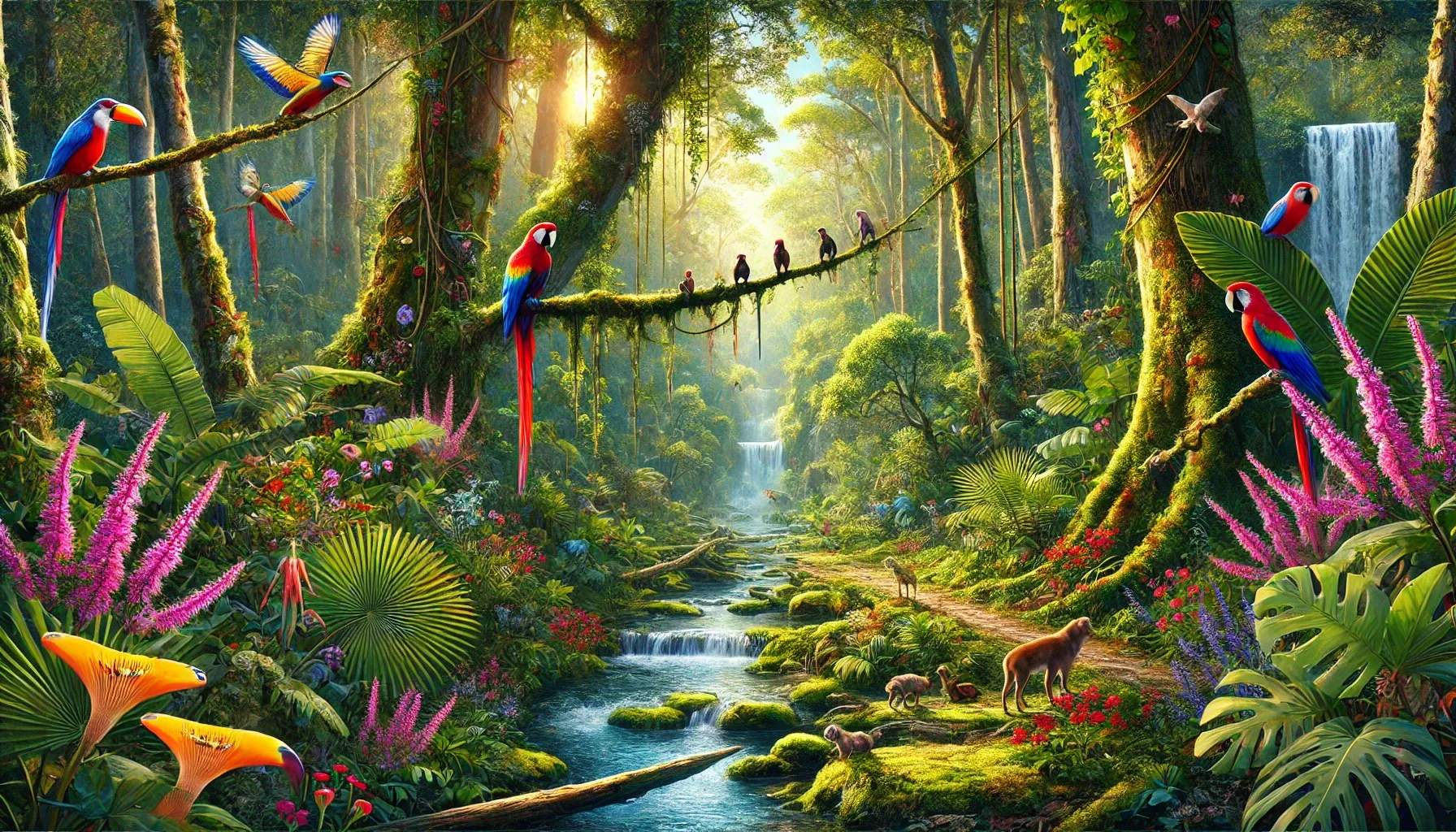Nature’s MVPs: The Vital Species Ecosystems Depend On
Ecosystems are delicate webs of life, and keystone species are the threads holding everything together. Learn what makes these vital organisms nature’s MVPs and why their survival impacts us all.

In the intricate web of life, some species wield an influence far greater than their numbers might suggest. These species, aptly named keystone species, are the linchpins of their ecosystems, holding together the delicate balance of interactions among plants, animals, and even the physical environment, making them truly some of the most valuable players (MVPs) in the game. But what happens when a keystone species is removed or its population is disturbed? The effects can be dramatic—and devastating—not only for the ecosystem but for all of us who depend on these natural systems.
What Are Keystone Species?
The term "keystone species" originates from architecture, where the central stone in an arch—the keystone—supports the entire structure. Similarly, in an ecosystem, a keystone species is one whose presence and role are crucial for maintaining the structure and health of the community.
Keystone species come in many forms. Predators such as the wolves in Yellowstone National Park regulate populations of herbivores such as elk, preventing overgrazing. Beavers, for instance, transform landscapes by building dams, creating wetlands that support diverse life. Pollinators such as bees and bats ensure the reproduction of flowering plants, sustaining food webs. Without these key players, ecosystems can become destabilized and lead to unfortunate consequences for other lifeforms.

The Ripple Effect of Losing a Keystone Species
When a keystone species is removed, the balance of the ecosystem unravels. This phenomenon, known as a trophic cascade, triggers a chain reaction that affects multiple species. Here are some real-world examples:
- The Wolves of Yellowstone: In the mid-20th century, wolves were eradicated from Yellowstone National Park. Without them, elk populations surged, leading to overgrazing of willow and aspen trees. This loss of vegetation affected songbirds and beavers, whose habitats depended on those trees. Only when wolves were reintroduced in 1995 did the ecosystem begin to recover.
- Sea Otters and Kelp Forests: In the Aleutian Islands during the 1990s, sea otter populations drastically declined due to increased predation by orcas, leading to an explosion of sea urchins, which overgrazed kelp forests and turned them into "urchin barrens." The loss of kelp forests caused significant biodiversity declines, as they serve as vital habitats for marine life, and reduced the ecosystem’s capacity to act as a carbon sink. This event highlights the critical role of sea otters as a keystone species and how their absence can destabilize entire ecosystems (Douglas B. Rasher et al.)
- Coral Reefs: In 2015-2016, a severe El Niño event caused mass coral bleaching in the Keeling Islands, with over 90% of the corals dying due to prolonged heat stress. This collapse destroyed habitats, leading to the loss of fish populations and turning the reef into an algae-dominated landscape. The ecosystem's food web unraveled, impacting both biodiversity and the local economy, as fishing and tourism declined. Coral reef disturbances can devastate entire marine ecosystems, and this particularly underscores the need to address climate change and protect reef resilience (National Oceanic and Atmospheric Administration).
Why Keystone Species Matter to Us
The health of ecosystems underpins our survival. Keystone species are critical to ecosystems, and these ecosystems provide us with countless benefits including:
- Clean air and water: Forests regulated by keystone species act as carbon sinks and water purifiers.
- Pollination services: Keystone pollinators ensure the production of crops that feed billions.
- Biodiversity: Diverse ecosystems are more resilient to environmental changes, and offer stability and resources for future generations of species. They serve as viable habitats for a wide array of species due to their cornucopia of resources.
When keystone species are disturbed, these services and networks are compromised, leading to cascading impacts on human well-being, food security, and even climate regulation.

What Can We Do?
Protecting keystone species is not just an environmental imperative; it’s a survival strategy. Here’s how we can contribute:
- Support Conservation Efforts: Back initiatives that focus on protecting critical habitats and restoring populations of keystone species.
- Reduce Carbon Footprints: Climate change is a major disruptor of ecosystems. Reducing emissions can help stabilize the environments these species depend on.
- Promote Sustainable Practices: Advocate for responsible farming, fishing, and forestry practices to prevent habitat loss.
- Educate and Advocate: Raise awareness about the importance of keystone species and support policies that protect them.
A Final Thought
Ecosystems are like symphonies, with keystone species acting as the conductors. Remove the conductor, and the music falters. As we continue to grapple with biodiversity loss and climate change, recognizing the pivotal role of keystone species reminds us that saving them is not just about protecting wildlife—it’s about preserving the harmony of life on Earth.
References
- National Geographic. 25 Years After Returning to Yellowstone, Wolves Have Helped Stabilize Ecosystem. https://www.nationalgeographic.com/animals/article/yellowstone-wolves-reintroduction-helped-stabilize-ecosystem. Accessed 15 Dec. 2024.
- Douglas B. Rasher et al.,Keystone predators govern the pathway and pace of climate impacts in a subarctic marine ecosystem.Science369,1351-1354(2020).DOI:10.1126/science.aav7515
- National Oceanic and Atmospheric Administration. Coral Bleaching During & Since the 2014–2017 Global Coral Bleaching Event. NOAA Coral Reef Watch, https://coralreefwatch.noaa.gov/satellite/analyses_guidance/global_coral_bleaching_2014-17_status.php. Accessed 15 Dec. 2024.
- "Sea Otters Maintain Remnants of Healthy Kelp Forest Amid Sea Urchin Overgrazing." ScienceDaily, 8 Mar. 2021, https://www.sciencedaily.com/releases/2021/03/210308152458.htm. Accessed 15 Dec. 2024.
Written with the assistance of GPT4.

